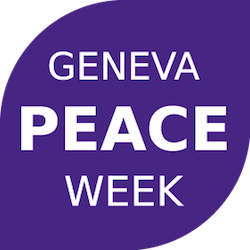Big data and conflict prevention: Balancing opportunities with challenges
14 Nov 2017 01:00h
Event report
The session moderator, Ms Barbara Rosen Jacobson, Programme Manager, DiploFoundation, introduced the topic by pointing at the big data hype, which often leads people to focus on utopian ideas of big data as the key to unlocking all dilemmas, or the dystopian approach that big data will lead to mass surveillance, discrimination, and the end of privacy. Both approaches are relevant for conflict prevention, the former identifying big data as a tool to prevent conflict, and the latter considering big data as a factor that could contribute to conflict. The focus of today is to look for a middle ground and to identify the actual potential of big data, as well as its limitations and recommendations for its responsible use.
Mr Marco Musumeci, Project Coordinator, United National Interregional Crime and Justice Research Institute (UNICRI), explained that technology can be seen from two perspectives: it can constitute a risk to conflict, as well as a risk mitigation factor. The UNICRI handles a wide-range of issues, from cybercrime and big data to artificial intelligence (AI). He presented a tool that the UNICRI has developed with CERN, which seeks to track crime patterns through the visualisation of big data. The data comes from a variety of sources, including confiscated assets. The visualisation demonstrated changes in the existing crime patterns, while enabling an assessment of the effectiveness of crime-related policies that have been implemented. He concluded by presenting the UNICRI’s latest establishment of a centre for AI and robotics in The Hague, which has been set up to examine the impact of AI for the security of member states.
Mr Jean-Marie le Goff, CERN, outlined that big data at CERN is not just about the size of the datasets, but rather about its complexity. This means that data may have multiple interpretations and facets. Visualisation plays a key role in helping analysis and provision of knowledge based on data. This visualisation usually occurs in networks between issues and provides information to the content expert in addition to mapping the information.
Mr Einar Bjorgo, UNITAR, Manager, Programme Operational Satellite Applications Programme (UNOSAT), started by presenting UNOSAT and explained that satellite data can be seen as the first form of big data. He outlined that despite the size of big data and satellite imagery, there is still a large amount of big data that is not currently used. According to him, satellite data can contribute to conflict prevention, by reporting and documenting early warning indicators, while providing actionable information for the national and international community. Satellite data can also provide input for reporting about human rights and humanitarian violations. He then presented case studies about how satellite data was used in Chad by providing more scaled or detailed mapping. He pointed out how satellite mapping enables monitoring areas that are inaccessible. Bjorgo finished by concluding that while satellite data can impact many areas related to conflict prevention and can provide comparisons across a span of time, it should be considered as one of the tools in the prevention toolbox.
Dr Karz Aznavour, International Committee of the Red Cross (ICRC), started by outlining that big data and data analytics need to be considered in the humanitarian field. Big data is both collected from various sources and structures internally and acquired externally from other actors and sources. However, the protection and security of sensitive and personal data need to be ensured. According to Aznavour, the discourse around data protection is changing from individual anonymity towards community-based data protection, which ensures the safety and rights of communities or groups. Considerations on data protection should be complemented with views from the field, to better understand the perceptions around data analyses among those whose data is collected. He finished by pointing out the central role of secure communication when transferring data and insights, as even insights from open data can be detrimental to the safety of data subjects.
Throughout the discussion, participants raised issues such as co-operation with regional organisations and private actors in the field of satellite images, and Bjorgo pointed out how the current legal framework enables the free utilisation of space-based satellite imagery. In addition, while human analysts can bring bias into the analysis of satellite images, UNOSAT addresses this through a varied background of employees and scientific openness. The last point was the role of legal and security frameworks related to the hosting of servers, which the ICRC seeks to address by keeping servers internally located.
Rosen Jacobson thanked the panel and audience before formally concluding the event.
Related topics
Related event

